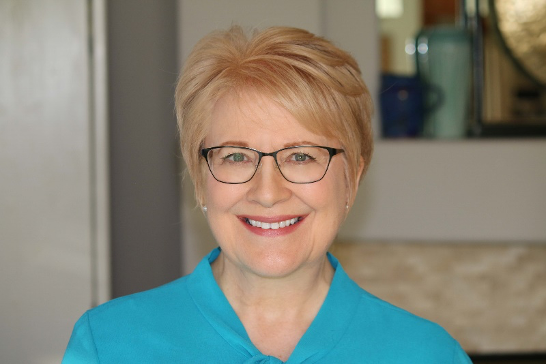The enchanting world of dance: It’s where kids get to express themselves, communicate feelings, and celebrate their journey of growth. Watching little dancers move is like witnessing pure magic.
But you know what’s not so magical? The comparison game. The pressure to be younger, fitter, and sexier is everywhere. Author Jen Ferguson, mother of two dancers described it like this, “it’s soul-crushing when my daughters compare their bodies to those of another teammate – or to an Instagram photo of a ballerina or contemporary dancer they admire. Their achievements and beauty seem to immediately fade in their own eyes when they are confronted with something they are not, and think they should be.”
Comparison to sexualized content
Comparison becomes even more complex when children find themselves not just comparing their bodies to glossy images on social media or to their dance buddies, but to hypersexualized dance costumes and choreography. The disconcerting part? The troubling influence of the porn industry on children’s dance in the form of sexualized dance moves and costumes.
This hypersexualization circus that has crept into dance has a foundation in marketing, and in fact, it affects all children. Kids are inundated with sexy content from media of all forms. Younger and younger kids are “sexualized” by TV, games, videos, clothing, and even the toys they play with.
But why? I mean, what’s the point of marketing glamor make-up kits for 5-year-old girls or t-shirts that say “Chick Magnet” for toddler boys? Why all this “age compression” (“kids getting older younger”) that has younger and younger kids acting like teens long before they reach their teen years?
Sex sells
Well, you’ve heard the truism, “Sex sells,” right? In the past, marketers used sex to sell adults everything from cars to toothpaste. But now, marketers know that if they can create the need to be sexy and then satisfy that need by selling consumers endless products, they’ve got profits!
How do they do this? The authors of So Sexy So Soon: The New Sexualized Childhood and What Parents Can Do to Protect their Kids by Diane E. Levin, PH.D., and Jean Kilbourne, ED.D. explain the tactics in this must-read book for parents.
First, marketers use media to disassociate sex from intimacy and love. Pornography does the same thing. Sexy marketing tactics lay a foundation for accepting this tenet of porn: sex is about entertainment and exploitation, not about building caring relationships.
“Both boys and girls are routinely exposed to images of sexual behavior devoid of emotions, attachment, or consequences. They learn that sex is the defining activity in relationships, to the exclusion of love and friendship. They learn that sex is often linked to violence.” (So Sexy So Soon, p. 5)
Kids as consumers
Second, kids are programmed to become consumers.
“[T]hey learn to associate physical appearance and buying the right products not only with being sexy but also with being successful as a person.” (So Sexy So Soon, p. 5)
Note: Sexualization is not about teaching kids about sex. Children will always be curious about sex from an early age, and they need age-appropriate information. According to the American Psychological Association, sexualization means treating others and even oneself as “objects of sexual desire…as things rather than as people with legitimate sexual feelings of their own.” (So Sexy So Soon p. 7) Again, another tie-in with porn: people, especially girls and women, are only valuable for their physical appearance. They are objects to behold and use.
And why is this bad for kids? (I know, “duh!”)
Because their “sex appeal” and physical attractiveness become the primary way they value themselves. Not for their kindness, their cleverness, their dance ability, music ability, or any number of amazing abilities. Nope. They’ve gotta be hot, and that means they need to buy something, or dance sexy, to help them attain “hotness.” And both boys and girls get this message loud and clear.
That’s the bottom line.
Porn culture influences sexualized dance
What does the marketing of sexiness mean for the dance world? This push for premature sexualization, fueled by marketers and the media, echoes the harmful themes found in pornography. It’s a cycle where kids are taught to value themselves primarily based on their physical appearance, perpetuating a culture where ‘hotness’ becomes the measure of success. This extends to dance routines and costumes that dancers feel like they have to be “sexy” to thrive.
This brings us back to the poignant observation that started our journey: the comparison game in dance. The harm is real, and it extends beyond comparing bodies to glossy images; it includes comparing themselves to sexualized dance themes, reinforcing damaging ideals and perpetuating a cycle of a need to be sexy that starts from a young age.
Resources to combat objectifying messages
The good news is that fostering a healthy self-image can create a shield against the harms of comparison and hypersexualization. Important resources that will make these conversations easy include:
- Good Pictures Bad Pictures. This series of read-aloud books feature easy-to-understand science and simple analogies to help your child develop defenses against the harmful messages of pornography.
- How to Talk to Kids About Pornography. A free downloadable guide from Defend Young Minds that includes tips for talking to your child about how porn influences pop culture and drives kids to objectify themselves in sexual ways.
- Healthy or Harmful Children’s Dance. A free ebook that will inform you of the harmful trends in children’s dance and how to pick a healthy dance studio.
By fostering a healthy self-image and utilizing these resources, we can flip the script on hypersexualization of kids. We can help create a culture that values kids for who they are, not just how they look. It’s about ensuring their journey through life, including their dance journey, is filled with joy, self-celebration, and wholesome self-discovery.
 Kristen A. Jenson is the founder of Defend Young Minds (formerly Protect Young Minds) and #1 best-selling author of the Good Pictures Bad Pictures series of read-aloud books which have translations in 10 languages. She is also the executive producer of the Brain Defense: Digital Safety curriculum and the owner and CEO of Glen Cove Press, LLC. Kristen is a positive voice for raising empowered, resilient, screen-smart kids who know how to reject pornography. She instills hope and confidence and leaves her audiences with pragmatic advice they can act on immediately to defend young minds. Kristen has testified before the Washington State Senate Law and Justice Committee on the public health crisis of pornography and has raised her strong voice at international conferences and symposiums such as the United Nations Civil Societies Conference and the National Coalition to End Sexual Exploitation Global Summit. She is a trusted guest on a variety of media platforms as she speaks up for protecting children from pornography and all forms of sexual exploitation. Kristen received her bachelor’s degree in English Literature and her master’s degree in Organizational Communication. She is a mother of three and grandmother of two, and currently lives with her husband and awfully cute dog in Washington State.
Kristen A. Jenson is the founder of Defend Young Minds (formerly Protect Young Minds) and #1 best-selling author of the Good Pictures Bad Pictures series of read-aloud books which have translations in 10 languages. She is also the executive producer of the Brain Defense: Digital Safety curriculum and the owner and CEO of Glen Cove Press, LLC. Kristen is a positive voice for raising empowered, resilient, screen-smart kids who know how to reject pornography. She instills hope and confidence and leaves her audiences with pragmatic advice they can act on immediately to defend young minds. Kristen has testified before the Washington State Senate Law and Justice Committee on the public health crisis of pornography and has raised her strong voice at international conferences and symposiums such as the United Nations Civil Societies Conference and the National Coalition to End Sexual Exploitation Global Summit. She is a trusted guest on a variety of media platforms as she speaks up for protecting children from pornography and all forms of sexual exploitation. Kristen received her bachelor’s degree in English Literature and her master’s degree in Organizational Communication. She is a mother of three and grandmother of two, and currently lives with her husband and awfully cute dog in Washington State.



